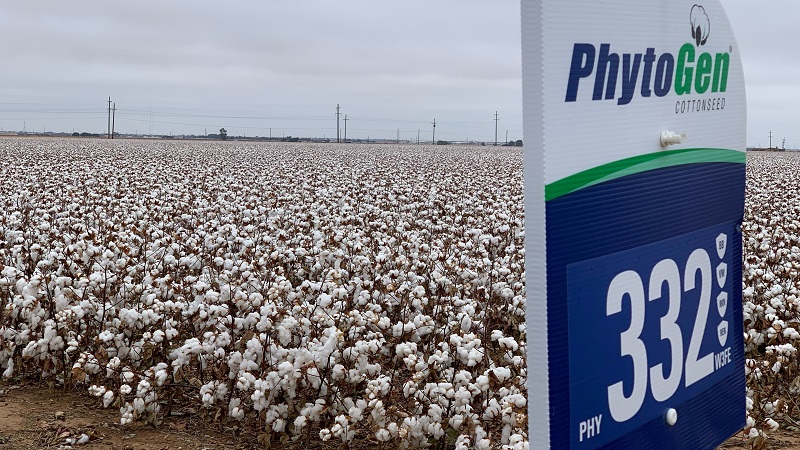Could Lost Market Share Make Cotton a ‘Luxury Fiber’?

Cotton is, to some degree, caught between a rock and a hard place. On one hand, it’s fighting desperately for planting space in a world that, with a rapidly growing population, requires an ever-growing supply of food. This problem is compounded by record-high corn and grain prices.
On the other hand, spinning mills continue to shift to manmade fibers due to the general stability of their prices and supply. And market share, which can be lost so quickly, is very difficult to regain.
It’s not all grim news for cotton, of course. It has made tremendous strides in the performance apparel market in recent years, and it remains the preferred fiber among consumers.
Add all of those things together and the near-term future is murky. To help get a clearer picture, Cotton International engaged three of the top minds in the spinning industry: Leon Picon, cotton purchasing manager with Orta ANADOLU T.A.S.; Andrew Macdonald, chair of the International Textile Manufacturers Federation (ITMF) Spinners Committee; and Werner Bieri, president and CEO, Buhler Quality Yarns.
1 Cotton Incorporated’s work with Under Armour to expand cotton’s presence into the sports apparel market is a great example of demand creation. Do you see any other fields/niches in which cotton has significant growth opportunities?
Picon: From my point of view, the lack of demand is not what is restricting cotton’s market share. The supply of cotton is the main consideration, and as we continue to produce more cotton globally, the market will be ready to consume it. I believe that cotton will regain its market share accordingly.
Macdonald: Unfortunately, I don’t see too many other growth opportunities for cotton at the moment. Cotton Incorporated was really on top of its game with the work they did with Under Armour. It wasn’t long ago that Under Armour’s slogan was that cotton is ‘the enemy,’ so what Cotton Incorporated achieved is nothing short of remarkable. It was a wonderful success story, but it’s the kind of thing that not many organizations, other than Cotton Incorporated itself, is capable of doing.
While there might be some gains here and there for cotton, I’m pessimistic that any new growth areas are out there that will provide the volume needed to make a noticeable difference in cotton consumption.
Bieri: It will need to be in the performance apparel market, as cotton has lost market share there and people are willing to pay more for performance wear than for fashion. In other applications, price is the dominant factor and if polyester is more competitive than cotton, there is not much one can do. Price is the dominant factor in non-performance wear.
2 How do you foresee the competition between cotton and synthetics changing in the near future? Will cotton be able to recapture its lost market share?
Picon: Following the integration of China, India and some other developing countries into the global economy at the beginning of the millenium, global average income per capita has been on the rise, driving up demand for food as well. As shown in the Food and Agriculture Organization’s Food Price Index, all food-related crop prices have increased significantly. The pivotal year was 2008, which introduced historically high food prices.
As a result of greater demand for food, planting grains and cereals has generally become more attractive than planting cotton. Cotton planting areas have decreased significantly, even though global textile demand, in general, has been increasing.
What’s happened is the rising demand for textiles has been met by synthetic fibers, and cotton barely managed to hold onto what it already has, let alone manage any significant gains.
This is clearly why cotton fiber has lost market share against other fibers over the last four years.
The question is, can we realistically expect cotton to regain its market share any time in the near future? I am afraid that won’t be possible, unless cotton can somehow be transformed into a more sustainable, mainstream commodity. Demand for food is rising unabated and it continues to take planting area away from cotton. The demand for textiles, regardless of whether they are made from cotton or synthetics, is also rising unabated.
The unavoidable result of those trends, unfortunately, is decreasing market share for cotton in the global fiber markets. On the bright side, cotton fiber is still the most comfortable and healthiest choice among the existing options, and consumers still prefer cotton as long as it is available at affordable prices.
Today, most of the cotton supply chain members agree that cotton supply is under high pressure and change is inevitable. The future lies in finding a way to transform cotton fiber into a more sustainable commodity in terms of its environmental, social and economic impacts.
Macdonald: Obviously, due to the volatility in the markets and the price of cotton getting so high, the fiber lost a significant amount of market share. It will be especially difficult to regain that share because of all of the adjustments mills need to make when they move from cotton to polyester: the labeling, the mix, the coloring, the dyeing, and so forth. That’s why spinners resisted shifting away from cotton for so long in the first place, but eventually the prices got so high that they had to do it. As a result, there will have to be a similar set of changes to get them to change back: very low cotton prices or very high polyester prices.
Bieri: At current prices for cotton, yes. But gaining back market share is always a long road, and farmers are not happy with today’s futures market. They can’t make money at the current input cost. So if we see a significant reduction of cotton production in the next couple of years and stocks come down, cotton prices will move up. The market might be growing overall, but cotton’s share likely will continue to decrease as a percentage. Cotton will become more of a luxury fiber in the mid-term.
3 Has the market volatility of the last few years changed the way mills purchase their raw materials permanently, and how has that affected the way they run their businesses?
Picon: Volatility is the heartbeat of commodity markets. Commodity trading would be meaningless without volatility. However, price manipulation on commodity exchanges and frequent government interventions have become defining moments in the cotton market since 2008. Volatility went up to unprecedented levels, punishing the most conservative market players as cotton futures decoupled from physical prices.
As physical cotton prices are not related to ICE the way they should be, an increasing number of mills are choosing to make their purchases on a fixed-price basis, and only buying enough for their short-term needs. International cotton trading has become increasingly risky due to price volatility and the lack of contract sanctity, among both traders and mills. Understanding and taking advantage of the local crop is becoming an extremely vital strategy for mills that operate in cotton-producing countries.
Macdonald: I think it’s a short-term phenomenon. The short-term, hand-to-mouth purchasing pattern we’ve seen recently is just the way they’ve chosen to cope with high prices and volatility during a crisis situation. But in the long term, I think they will return to buying their raw materials as they’ve done in the past.
Bieri: It certainly has, as mills, especially in today’s uncertain economic times, are pretty much purchasing hand to mouth. A year ago, however, it was different. There was a fear that they would not get any cotton at all, so they would take contracts at any price. We see two extremes when we look back the last two years:
• buying at any price – but then a lot of mills defaulted, failed to open letters of credit, etc.
• living hand to mouth – just buying what they need in the short-term. Everybody is scared to be caught with too-high-priced contracts in a bear market.









